Your Apple ID or iCloud ID (same thing) contain valuable data such as your contacts, messages, photos, calendar events, files, third-party app data, payment methods, Apple ID balance, device backups, shipping & billing addresses, contact information, and more.
Therefore, it’s critical to keep your Apple account secure, and in this guide, we will share 13 essential tips to achieve a high level of security.
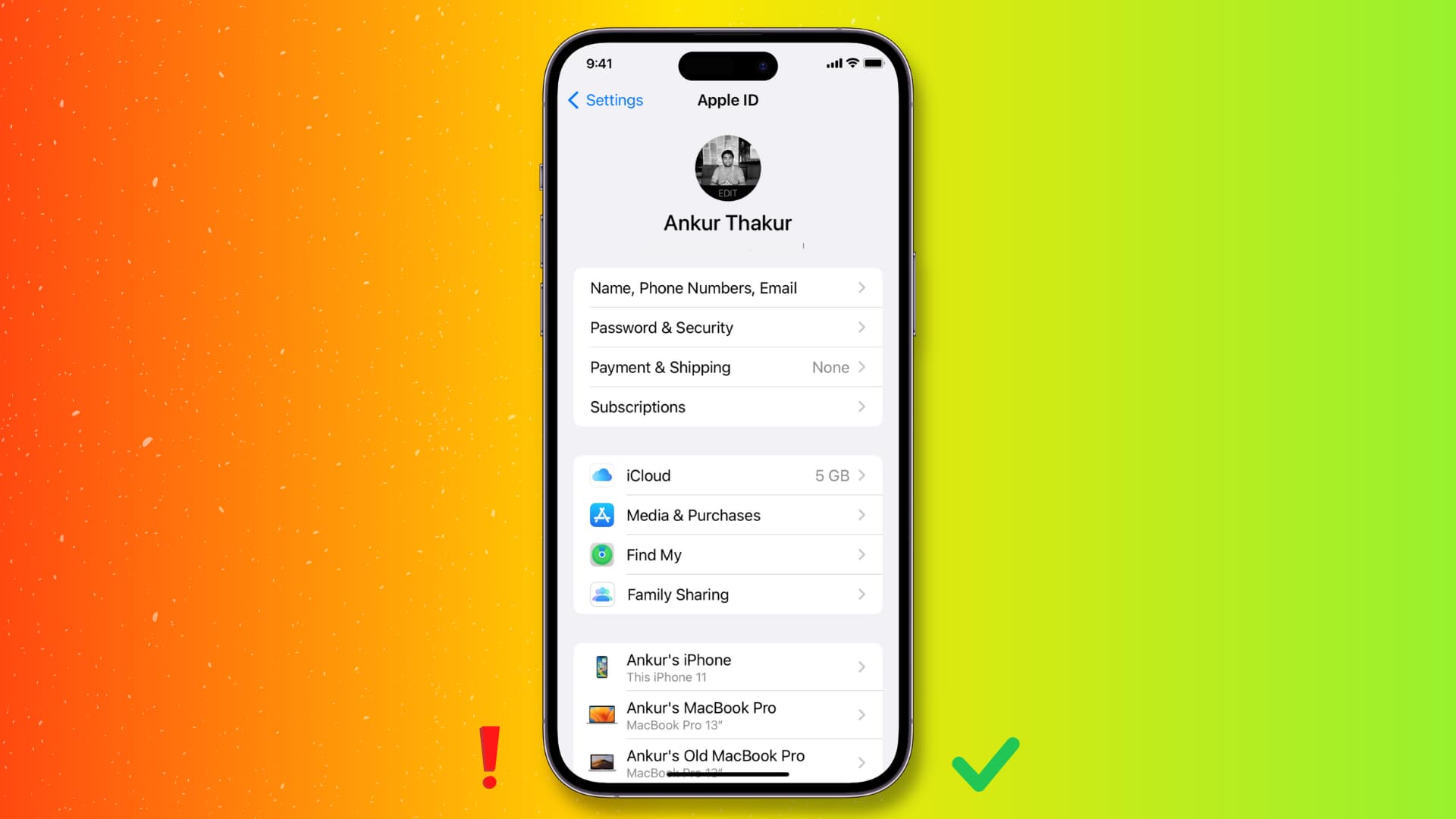
1. Enable two-factor authentication
Suppose someone has your Apple ID email address and password. Without two-factor authentication (2FA) or the older two-step verification, they can log in to any iPhone, iPad, Mac, or iCloud web and get hold of your personal data. But if you have 2FA enabled for your Apple ID, the intruder will need a six-digit code sent to your trusted devices to complete the login (which you obviously won’t share).
If you’re using an iPhone, iPad, or Mac updated in the last five years, you most likely already have two-factor authentication set up on your Apple ID. But if in the rare case you have an old device, make sure to turn on two-factor authentication.
To learn more about this topic, go through our guide on adding and removing trusted devices for Apple ID two-factor authentication.
Even if you have two-factor authentication set up, never share your Apple ID password with anyone, be it friends or people claiming to be Apple Support.
You must know that Apple never asks for your Apple ID password. However, when you contact Apple Support via chat, call, or email, the representative may ask you to confirm your Apple ID through a notification sent to your Apple device.

Besides that, you may generate a four-digit Support PIN and share that with the representative to accelerate the support process. Here’s how:
- Go to appleid.apple.com, tap Sign In and complete the process using your Apple ID. Tip: If you use Safari, you can quickly sign in using Face ID, Touch ID, or device passcode.
- Scroll to the bottom and tap Support PIN > Generate PIN. In a few seconds, you’ll see a code that’s valid for one-time use in the next 30 minutes. You can share it with Apple support.
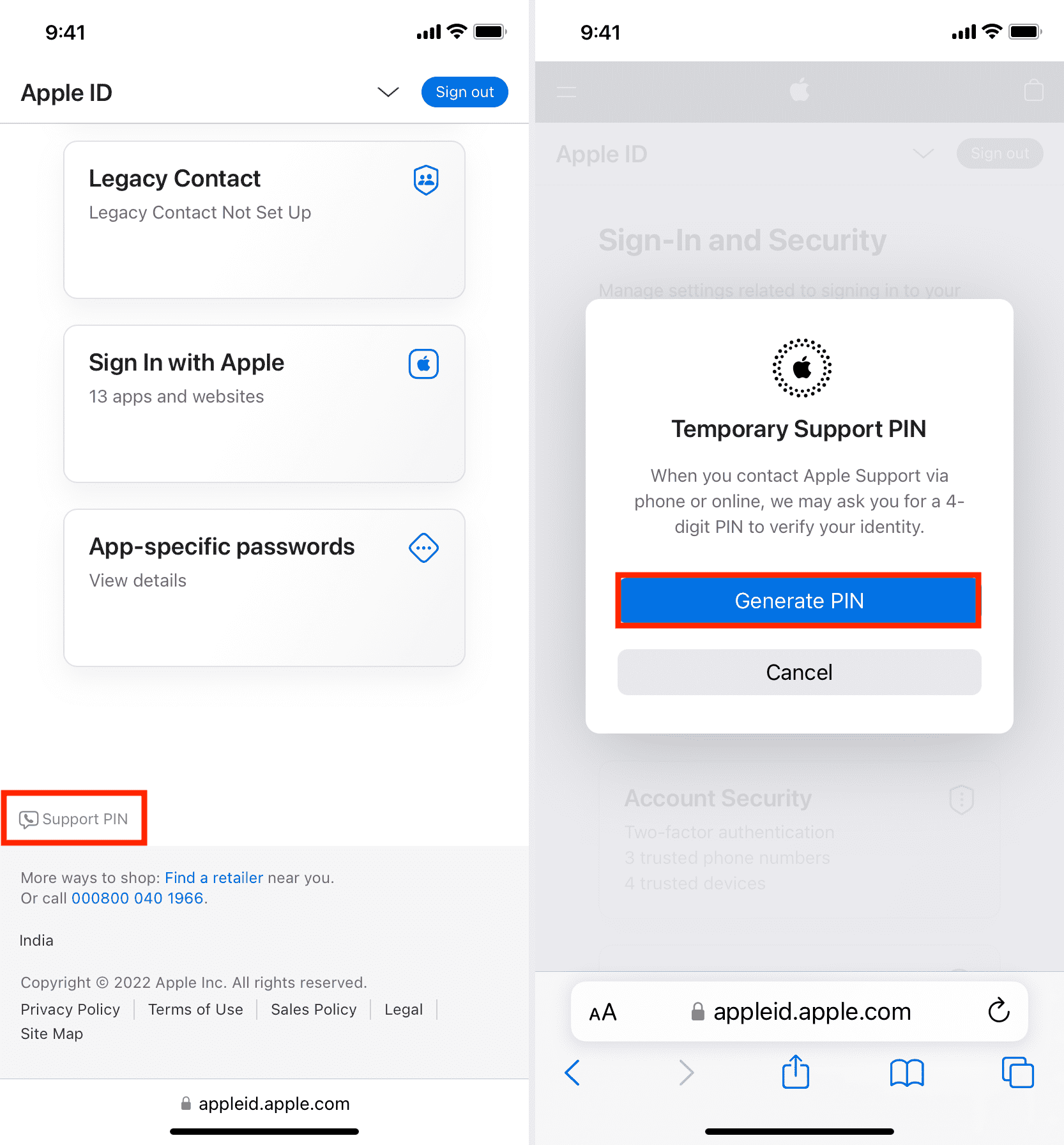
Except for the support PIN we discussed above (which is only to be shared with Apple Support), do not disclose any other verification code you receive on your iPhone, iPad, and Mac. Similarly, don’t share any one-time password (OTP) you get on the phone number and email address added to your Apple ID.
4. Be aware of scams!
Did you know that 59.4 million Americans lost $29.8 billion to phone scams in a year? Most of these scammers are from India, Nigeria, Pakistan, Indonesia, and the Philippines.
When you receive a call asking you to make a small refundable payment to process the cancellation, buy gift cards, or share the verification code you received on your iPhone, be alerted, as this is certainly a scam. Hang up the call!
Apple clearly says, “If it sounds like a scam, assume that it is.”
Several dedicated YouTube channels, like Scammer Payback, Trilogy Media, Jim Browning, and Pleasant Green, only make videos related to such phone and email scams. Share those videos with older people in your family, as these scammers primarily target them. In many cases, the person who has been scammed refrains from sharing the ordeal with family members due to fear or shame! So, educate your extended family members and make them aware, as this is the first step to avoiding such scams.
On that note, here’s a video from Jon Rettinger about Apple ID scams:
5. Learn to distinguish between iOS and phishing Apple ID password popups
iOS has a problem – it can randomly ask for your Apple ID password.
Some websites and apps may try to scam you by showing a popup alert that looks just like the iOS Apple ID password box.
When you receive such a popup, swipe up or press the Home button to go to the Home Screen. If the popup box disappears, that’s most certainly a fraud attempt to get your Apple ID password and hack your account. But if you still see the alert, that means it’s an actual iOS alert from Apple, in which case you can enter your Apple ID password to authenticate. Besides that, you can go a step further and open the Settings app. If an actual issue with your Apple ID requires you to enter your Apple ID password, you’ll see a notification banner on the top of the Settings app. Tap it and then type your Apple ID password.
📝 One of these is Apple asking you for your password and the other one is a phishing popup that steals your password https://t.co/PdOJcthqL7 pic.twitter.com/6N3lawTVGo
— Felix Krause (@KrauseFx) October 10, 2017
6. Report to Apple
Be vigilant if you receive a message, email, phone call, or other communication pretending to be Apple and asking for personal details or encouraging you to click a link and update the details. If you think it’s suspicious, take a screenshot and send it via email to Apple at reportphishing@apple.com.
Besides that, go through this helpful Apple Support page on recognizing and avoiding phishing messages, phony support calls, and other scams.
7. Set a passcode on all your Apple devices
iPhone always stays with you, and if you leave it somewhere, its passcode protects your data. Put a strong passcode so that your Apple ID, on-device data, and stuff saved in the cloud are safe.
- iPhone and iPad: Go to Settings > Face ID & Passcode or Touch ID & Passcode.
- Mac: Apple icon () > System Settings > Touch ID & Password.
Some people buy a paid app and then log in with their Apple ID on their friend’s iPhone, so their device can also have that paid app for free.
We strongly recommend you avoid such practices as they can compromise your safety.
If you want to share a purchased app or media (songs, movies, TV shows, books) with others, use Family Sharing. Again, this should be used with immediate family members like your spouse, kids, parents, and siblings.
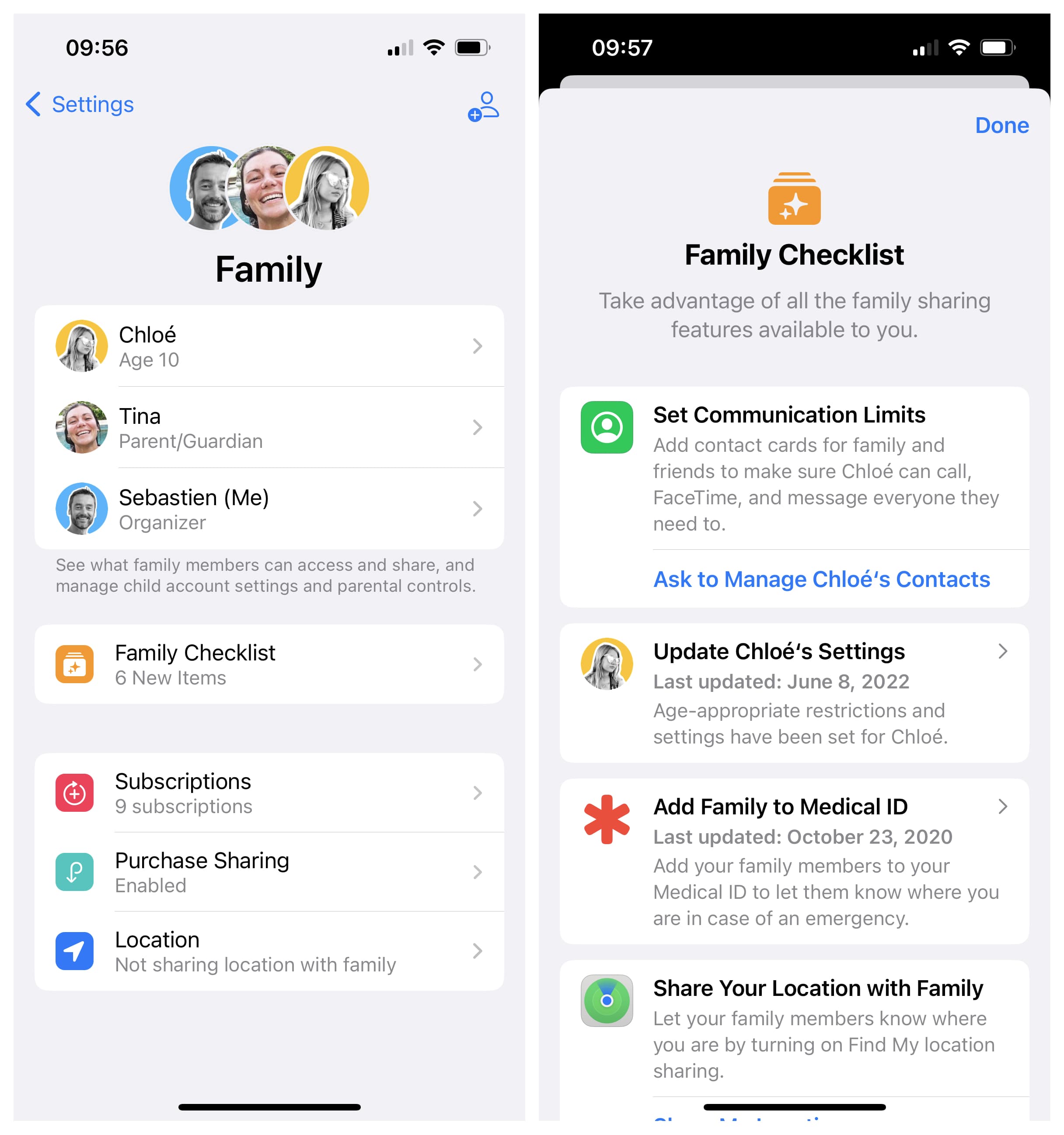
9. Update your Apple devices frequently
Apple periodically pushes updates for all its major operating systems like iOS, iPadOS, macOS, watchOS, and tvOS. Make sure your devices run the latest version of the operating system. If you own several devices, you can automate this task by enabling automatic updates. Here’s how:
- iPhone and iPad: Settings > General > Software Update > Automatic Updates. From here, enable Download iOS Updates, Install iOS Updates, and Security Responses & System Files.
- Apple Watch: Watch app > My Watch > General > Software Update > Automatic Updates.
- Mac: Apple icon () > System Settings > General > Software Update > Info button (ⓘ) next to Automatic Updates. From here, enable Download new updates when available, Install macOS updates, and Install Security Responses and System files.
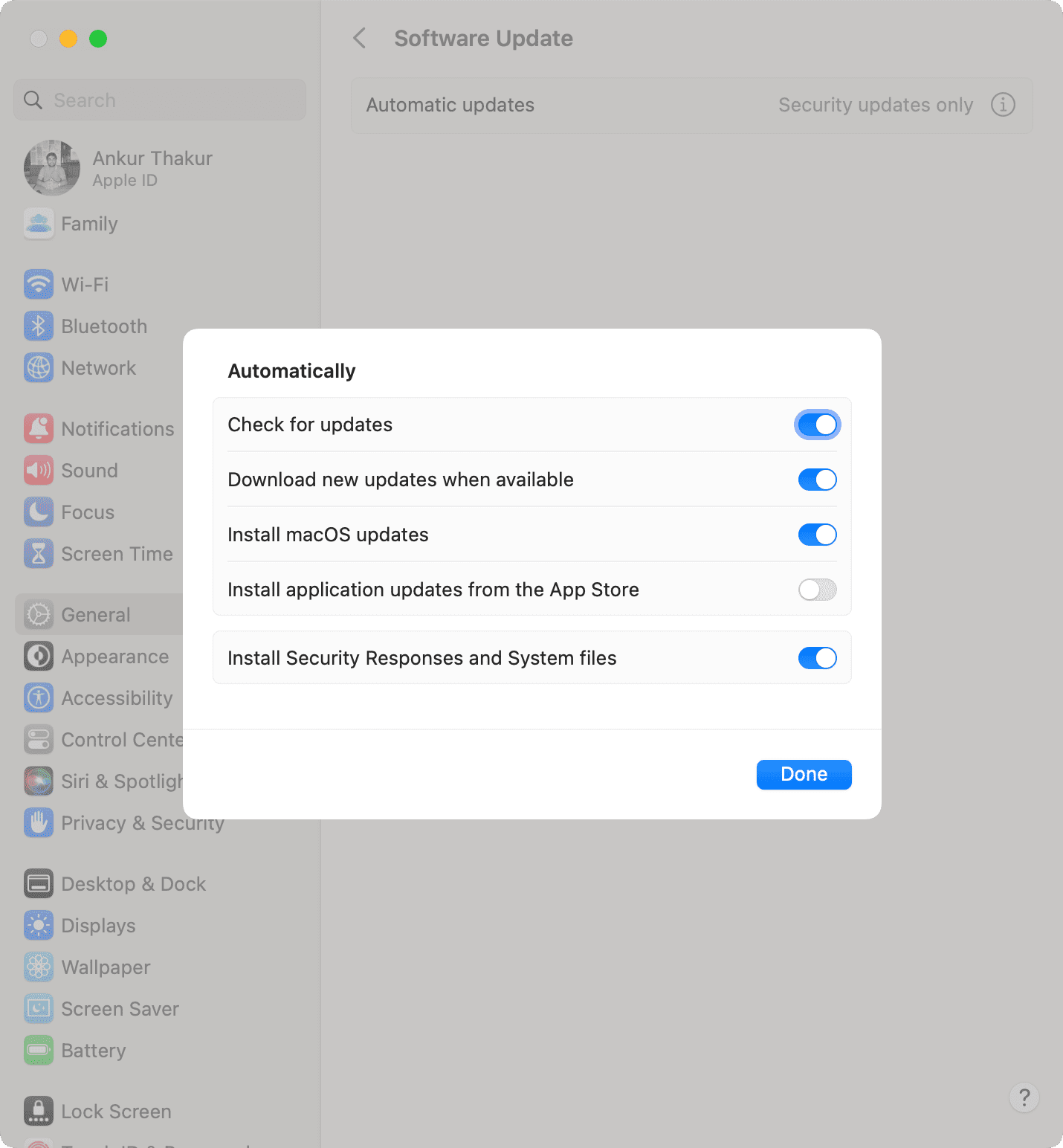
10. Update your Apple ID password
If you have been using the same Apple ID password for a long time, consider changing it:
- iPhone and iPad: Settings > your name tile from the top > Password & Security > Change Password.
- Mac: Apple logo () > System Settings > your Apple ID > Password & Security > Change Password.
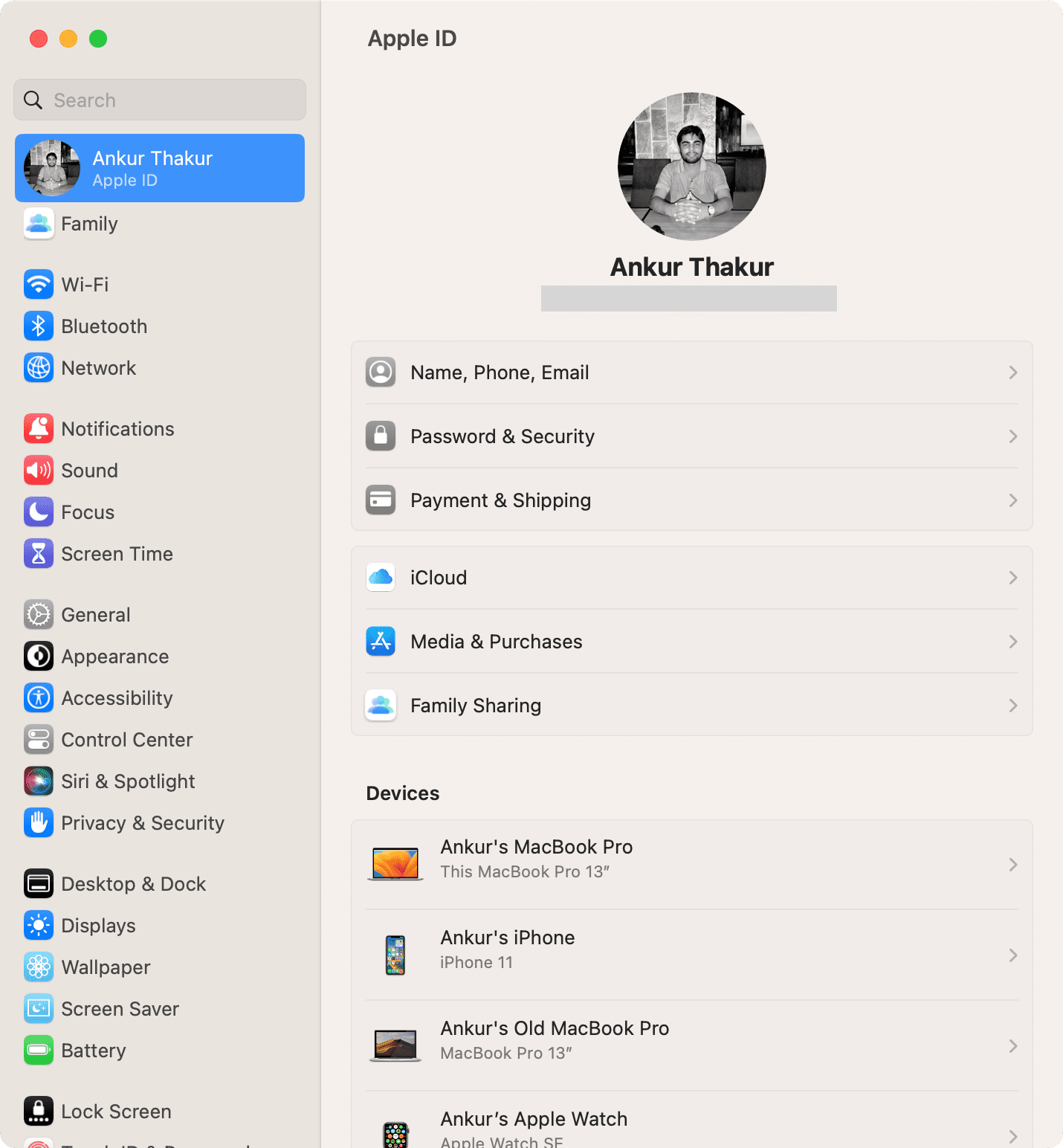
11. Keep your Apple ID details up to date
Your Apple ID has vital information like phone number, email, shipping address, and billing address. If you change these in real life, make sure to update the new one in your Apple ID. You can do that by following these steps:
- iPhone and iPad: Settings app > your name tile from the top > Name, Phone Numbers, Email, and Payment & Shipping.
- Mac: Apple logo () > System Settings > your name > Name, Phone Numbers, Email, and Payment & Shipping.
12. See which apps are using your Apple ID and remove unnecessary ones
People love Sign in with Apple, which hides their email address and shares a random email with the apps. But over time, you may have accumulated apps and services you no longer use or need. If that’s the case, consider removing your Apple ID from dormant apps.
13. Sell or pass on your old device after taking proper measures
When you sell, gift, or give away your old iPhone or iPad to someone, sign out of your Apple ID, which will ensure your contacts, photos, messages, and more aren’t seen or altered by the next owner of your old device.
Must see: 15 things you must do (and not do) before selling, giving away, or trading your iPhone or iPad
Keeping your personal information safe
The above tips will help secure your Apple ID and keep the bad guys away from your data.
Besides that, you should also take some precautions to keep your email account, apps, and other online accounts safe. One of the easiest ways to do that is by enabling two-factor authentication for them.
Finally, it would be best to periodically review what permissions you have given to apps on your iPhone and what you share with others. You can do this effortlessly, thanks to the Safety Check tool in iOS 16.
You’ll also love: